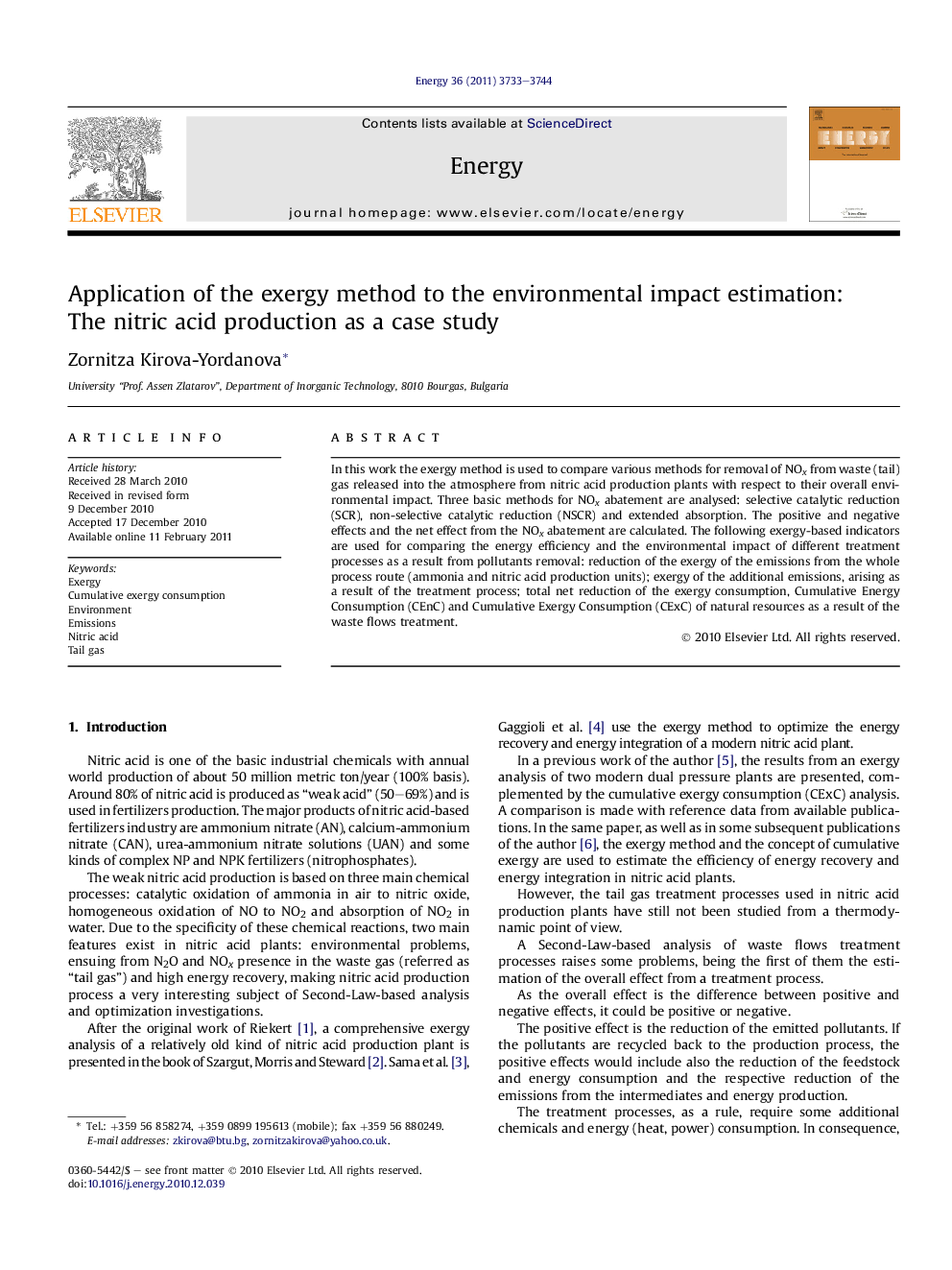| Article ID | Journal | Published Year | Pages | File Type |
|---|---|---|---|---|
| 1734708 | Energy | 2011 | 12 Pages |
In this work the exergy method is used to compare various methods for removal of NOx from waste (tail) gas released into the atmosphere from nitric acid production plants with respect to their overall environmental impact. Three basic methods for NOx abatement are analysed: selective catalytic reduction (SCR), non-selective catalytic reduction (NSCR) and extended absorption. The positive and negative effects and the net effect from the NOx abatement are calculated. The following exergy-based indicators are used for comparing the energy efficiency and the environmental impact of different treatment processes as a result from pollutants removal: reduction of the exergy of the emissions from the whole process route (ammonia and nitric acid production units); exergy of the additional emissions, arising as a result of the treatment process; total net reduction of the exergy consumption, Cumulative Energy Consumption (CEnC) and Cumulative Exergy Consumption (CExC) of natural resources as a result of the waste flows treatment.
► A thermodynamic study of the effects of three NOx abatement methods. ► A comparison of the positive, negative and overall net effects of the three methods. ► The best overall results are obtained for the extended absorption method. ► The selective catalytic reduction method is estimated as unsatisfactory. ► The non-selective catalytic reduction method could benefit from improved catalysts.
